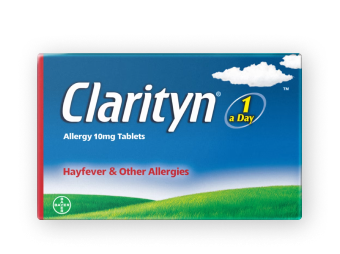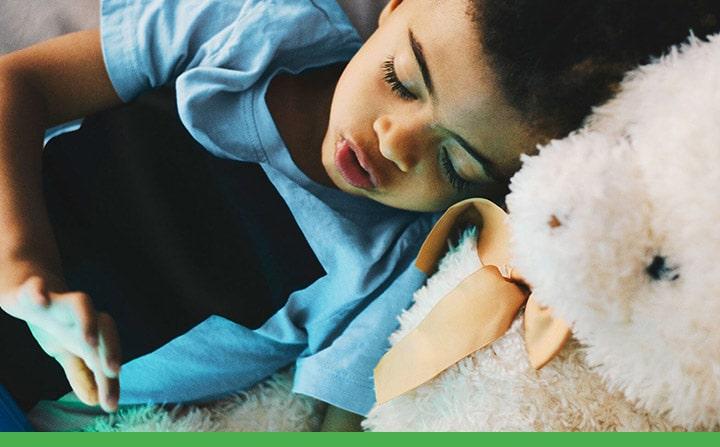
In this guide to hayfever you can find out more about:
- Symptoms of hayfever
- What pollen causes hayfever
- What time of year hayfever is most common
- Who can get hayfever
- How to treat hayfever in adults and children
- Antihistamines and how they work
Hayfever symptoms
Hayfever (or seasonal rhinitis ) symptoms can vary during different parts of the year. The time of year you find your hayfever is triggered may indicate what sort of pollen you’re most allergic to, as different plants release pollen at different times (see “What kinds of pollen cause hayfever?”, below).
Your local pharmacist should be able to provide you with a diagnosis based on your symptoms, and you may not need to see your doctor.
If you have some of the following symptoms, you may be suffering from hayfever:
- Itchy, red or watery eyes
- Itchy throat, nose and skin
- Sneezing and blocked nose
- Runny nose
- A rash
- Asthma flare-ups
- Coughing
- Loss of smell
- Headaches and pain around the temples
- Feeling tired (or finding it difficult to sleep due to allergy symptoms)
- Sinus pain or sinusitis (if you’re suffering from repeated sinusitis, you should talk to your doctor)
- Post-nasal drip (the feeling of mucus running down the back of your throat)
A less common symptom of hayfever is dizziness. If you have hayfever, your Eustachian tube (which connects your middle ear to the back of your throat) can become blocked with mucus. If this happens, it cannot equalise pressure in the ear, leaving you feeling unbalanced and dizzy.
What causes hayfever?
Hayfever is a seasonal allergic reaction that is triggered by exposure to tree pollen, grass pollen and weed pollen entering the body. It can also be caused by pollen from flowers. Weed pollen comes from common weeds like nettles, ragweed, ribwort and mugwort. The most common allergen that causes hayfever is grass pollen.
Pollen is a very fine powder that is released by plants as part of their reproductive cycles. It is an airborne allergen, which means it circulates in the air and can enter your body when you breathe. It can also cling to your clothes, skin and hair, so you can easily bring it inside with you.
It's the protein found in pollen that triggers hayfever.
When is hayfever season?
In the UK, hayfever is most common between late March and September, when the pollen count is at its highest. It can be worse when conditions are warm, dry or windy as pollen carries in the air. Hayfever tends to start in spring, then lasts until autumn as different kinds of pollen are released.
Tree pollen is released in spring, followed by grass pollen at the end of spring until the start of summer, and then finally weed pollen in late autumn. Different kinds of pollens may trigger your symptoms more over hayfever season, making them more severe.
| February – June | May – July | June – September |
Tree pollen
|
Grass pollen |
Weed pollen |
Who can get hayfever?
Hayfever is one of the most common allergies, and it’s estimated that one in five people get it at some point in their life. People can get it at any age, although it often begins in childhood. You’re more likely to develop hayfever if you already have a family history of allergies, as well as asthma or eczema (atopic dermatitis ).
While some people may be more susceptible, there’s no way to predict who will suffer from hayfever, and it can develop at any time.
About 10–15% of children suffer from hayfever. If your child is displaying any of the symptoms above (like itching, sneezing and a runny nose), then there’s a chance they may have hayfever. Hayfever can be an inherited trait, so if you or someone in your family has hayfever there’s a chance your children may do as well. Read on to learn how you can treat hayfever in adults and children.
How to get hayfever relief?
While there is no cure for hayfever, there are some measures you can take to help prevent or treat the allergic reaction. The most effective step you can take is to avoid contact with the pollen that triggers hayfever altogether: this means staying inside and keeping doors and windows shut. However, this isn’t a very practical choice, especially in the summer!
Here are some tips for managing hayfever symptoms:
- Monitor pollen forecasts and consider staying indoors when the pollen count is very high to avoid contact with pollen
- Take an antihistamine medicine like Clarityn Allergy Tablets to relieve your allergy symptoms
- Use nasal sprays like Clarinaze Allergy Control Nasal Spray to relieve nasal symptoms like congestion
- Use eye drops to relieve itchy eyes
- After being outside on high pollen days, shower, wash your hair and clean your clothes when you get home as pollen can be carried inside on your clothes, body, skin and hair
- Apply a barrier around your nostrils like petroleum jelly to trap pollen before it can enter your nose
- Keep your home pollen-free by regularly hoovering and damp dusting
- Wear wraparound sunglasses to stop pollen getting in your eyes
- Don’t keep freshly cut flowers in your home
- Avoid hanging up laundry outside, as pollen can cling to the fabric
- If you have asthma, make sure you’re taking your preventative treatment as prescribed and carrying your reliever inhaler with you during hayfever season
When to see a doctor
Typically, hayfever can be managed by preventative measures or antihistamine medication like Clarityn. But if your hayfever symptoms are ongoing and start to get in the way of your day-to-day life, you should consider seeing your doctor.
If you experience symptoms such as swelling of the throat and lips, feeling lightheaded, difficulty breathing, or wheezing you should seek medical attention, as these could be signs of anaphylaxis (a severe allergic reaction).
What are antihistamines and how do they work?
Antihistamines are a kind of medication which aims to provide relief from the symptoms of an allergic reaction. There are two main kinds of antihistamines: first-generation, which has a sedative effect (making you feel tired), and second- and third-generation, which have less prevalent drowsiness.
Antihistamines can be bought without a prescription over the counter and you can usually find them in your local chemist or supermarket.
To explain how antihistamines work, we first need to talk about histamine and your immune system .
Histamine is a naturally occurring chemical that is released by your immune system after being exposed to allergens. When you have hayfever, mast cells located in the sinus and nose membranes release histamine when you inhale pollen in the air. Histamine then attaches to receptors on nearby blood vessels, causing them to enlarge (dilate). Histamine also binds to other receptors located in nasal tissues, causing inflammation, redness, swelling, itching and increased mucus production – better known as the symptoms of hayfever!
Antihistamines are a medication that blocks the histamine receptors in your body, preventing the chemical from being released and triggering the symptoms of an allergic reaction.
Antihistamines from Clarityn
Clarityn Allergy Tablets are an effective allergy treatment that contains loratadine, a second-generation antihistamine that is non-drowsy in the majority of users to provide 24-hour relief from hayfever and allergy symptoms.
If your children have hayfever, you can follow the tips above as well as checking out our handy guide on managing children’s allergies. When allergies strike, you can effectively treat hayfever with Clarityn Allergy Syrup. Clarityn Allergy Syrup is suitable for kids aged 2+ in a great-tasting mixed berries flavour, providing 24-hour relief from allergy symptoms so your kids can be kids all hayfever season.






